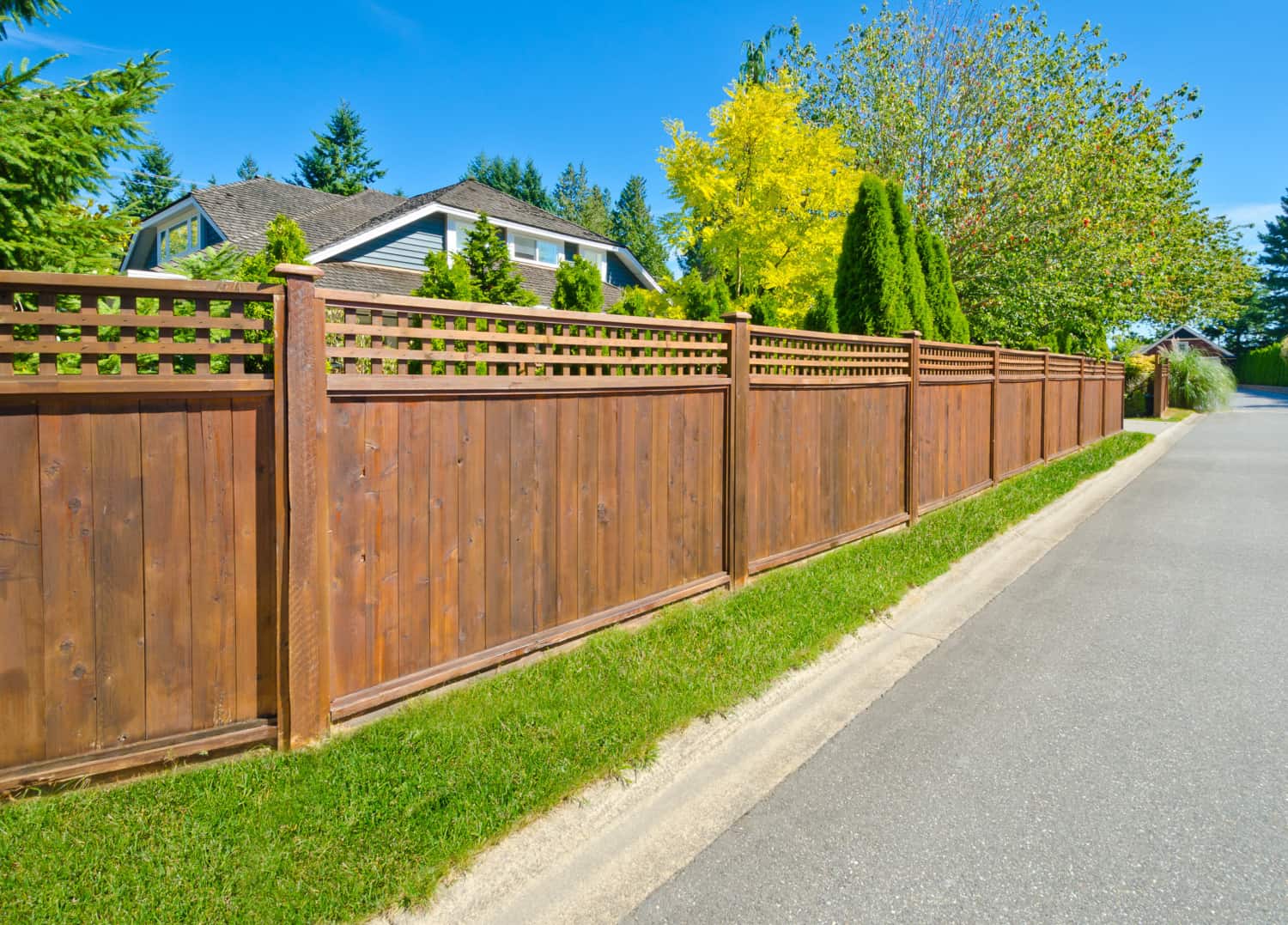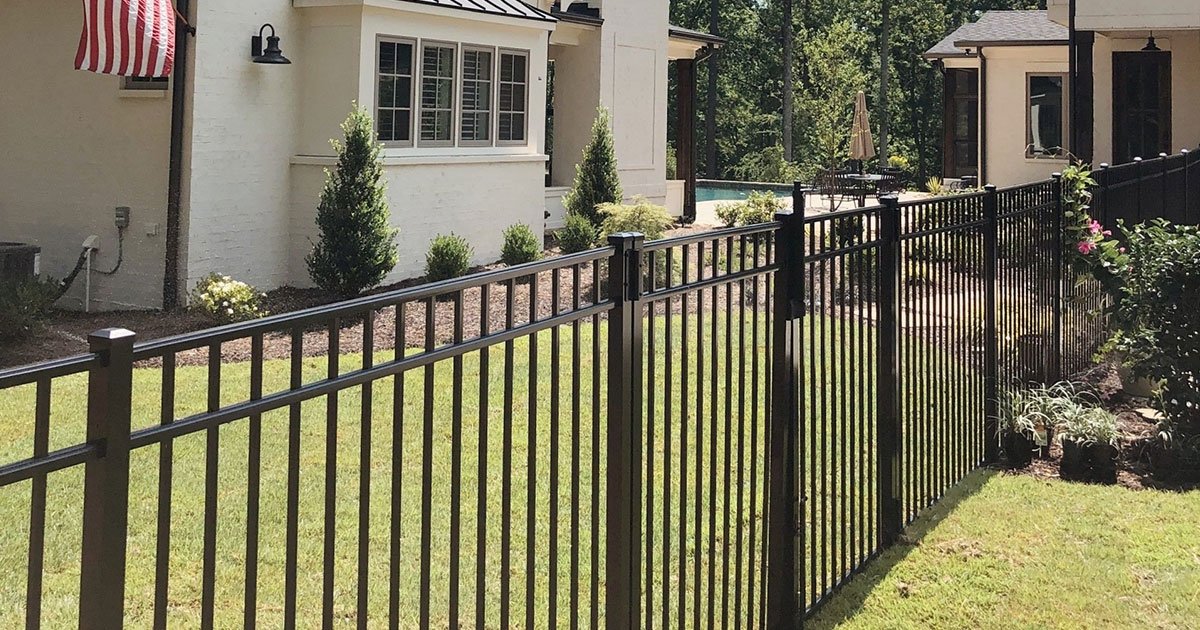All Categories
Featured
When it concerns preserving a wood fencing, house owners usually deal with the choice of whether to discolor or paint. Both choices have their benefits and drawbacks, and the option eventually relies on your aesthetic preferences, the kind of wood, and just how much upkeep you're willing to dedicate to. Below's a thorough contrast to aid you make an educated choice.
The Essentials of Paint and Discoloration
Painting includes covering the timber with a nontransparent layer of shade. It gives total protection, hiding the wood grain while providing exceptional defense versus environmental components.
Staining passes through the wood, boosting its all-natural elegance while including a protective layer. Depending upon the kind, spots can range from transparent to solid, allowing differing degrees of timber grain presence.
Pros and Disadvantages of Painting
Pros:
Wide Range of Colors: Paint offers limitless shade choices, allowing you to match your fencing to your home's outside or individual design.
Longer Lasting: Premium outside paint can last up to 5-7 years, calling for much less regular reapplication.
Superior Protection: Paint forms a thick, solid obstacle versus moisture, UV rays, and bugs.
Cons:
Peeling Off and Splitting: Over time, paint can crack or peel, especially in areas with severe weather conditions.
Hides Natural Timber Appeal: If you enjoy the all-natural grain of timber, paint may not be the most effective choice.
Higher Maintenance: Repainting needs removing the old paint, which can be labor-intensive.
![]()
Advantages And Disadvantages of Discoloration
Pros:
All-natural Appearance: Discolorations preserve and boost the all-natural elegance of the wood, making it suitable for top notch wood like cedar or redwood.
Much Easier to Reapply: Unlike paint, stains do not peel or crack. Reapplying stain typically needs less surface area preparation.
Adaptable Complete Alternatives: Stains can be found in transparent, semi-transparent, and strong ranges, offering different degrees of protection.
Cons:
![]()
Much Shorter Lifespan: Spots, especially clear and semi-transparent ones, might require reapplication every 2-3 years.
Limited Color Alternatives: While spots offer natural tones, they lack the wide shade scheme available with paint.
Much Less Protective: Discolorations penetrate the wood however don't offer as thick an obstacle as paint, making them slightly less safety versus severe weather condition.
Factors to Take Into Consideration
Aesthetic Preferences: If you want vivid shades and full coverage, paint is the way to go. For a all-natural and rustic look, select stain.
Timber Type: High-quality timbers with stunning grains take advantage of discoloration, while lower-grade timbers can be repainted for a refined appearance.
![]()
Climate: In damp or humid climates, paint's thicker barrier might supply much better defense. In modest or completely dry climates, stains can be enough.
Upkeep Commitment: Painting involves less constant reapplication however more effort throughout touch-ups. Staining needs normal upkeep however is much easier to manage.
Final Thoughts
Both paint and discoloration can properly shield and beautify your wood fencing. The finest alternative relies on your concerns, whether they lean toward aesthetics, longevity, or ease of upkeep. By comprehending the benefits and downsides of each, you can choose the finish that lines up with your needs and guarantees your fencing continues to be a standout feature of your residential or commercial property for many years to find.
The Essentials of Paint and Discoloration
Painting includes covering the timber with a nontransparent layer of shade. It gives total protection, hiding the wood grain while providing exceptional defense versus environmental components.
Staining passes through the wood, boosting its all-natural elegance while including a protective layer. Depending upon the kind, spots can range from transparent to solid, allowing differing degrees of timber grain presence.
Pros and Disadvantages of Painting
Pros:
Wide Range of Colors: Paint offers limitless shade choices, allowing you to match your fencing to your home's outside or individual design.
Longer Lasting: Premium outside paint can last up to 5-7 years, calling for much less regular reapplication.
Superior Protection: Paint forms a thick, solid obstacle versus moisture, UV rays, and bugs.
Cons:
Peeling Off and Splitting: Over time, paint can crack or peel, especially in areas with severe weather conditions.
Hides Natural Timber Appeal: If you enjoy the all-natural grain of timber, paint may not be the most effective choice.
Higher Maintenance: Repainting needs removing the old paint, which can be labor-intensive.

Advantages And Disadvantages of Discoloration
Pros:
All-natural Appearance: Discolorations preserve and boost the all-natural elegance of the wood, making it suitable for top notch wood like cedar or redwood.
Much Easier to Reapply: Unlike paint, stains do not peel or crack. Reapplying stain typically needs less surface area preparation.
Adaptable Complete Alternatives: Stains can be found in transparent, semi-transparent, and strong ranges, offering different degrees of protection.
Cons:

Much Shorter Lifespan: Spots, especially clear and semi-transparent ones, might require reapplication every 2-3 years.
Limited Color Alternatives: While spots offer natural tones, they lack the wide shade scheme available with paint.
Much Less Protective: Discolorations penetrate the wood however don't offer as thick an obstacle as paint, making them slightly less safety versus severe weather condition.
Factors to Take Into Consideration
Aesthetic Preferences: If you want vivid shades and full coverage, paint is the way to go. For a all-natural and rustic look, select stain.
Timber Type: High-quality timbers with stunning grains take advantage of discoloration, while lower-grade timbers can be repainted for a refined appearance.

Climate: In damp or humid climates, paint's thicker barrier might supply much better defense. In modest or completely dry climates, stains can be enough.
Upkeep Commitment: Painting involves less constant reapplication however more effort throughout touch-ups. Staining needs normal upkeep however is much easier to manage.
Final Thoughts
Both paint and discoloration can properly shield and beautify your wood fencing. The finest alternative relies on your concerns, whether they lean toward aesthetics, longevity, or ease of upkeep. By comprehending the benefits and downsides of each, you can choose the finish that lines up with your needs and guarantees your fencing continues to be a standout feature of your residential or commercial property for many years to find.
Latest Posts
The Convenience and Effectiveness of Charging Your EV
Published Apr 20, 25
1 min read
Trendy Comfort Begins With the Ground Up
Published Apr 20, 25
1 min read
Contact Montclare Auto Repair Now - Trusted Service at Your Service
Published Apr 20, 25
2 min read